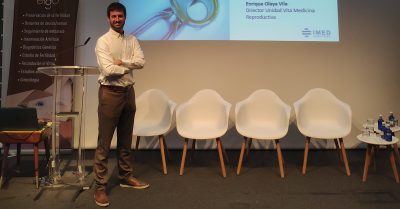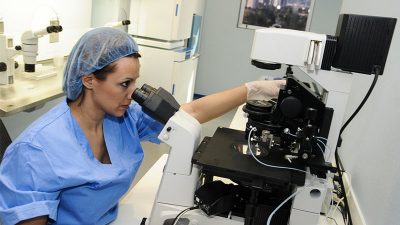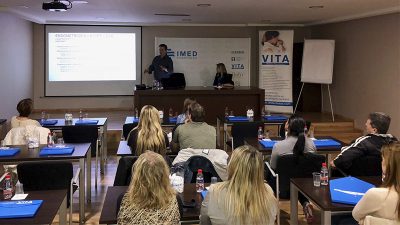Reproductive Medicine Laboratory
VITA Reproductive Medicine clinics have their own laboratory equipped with state-of-the-art systems.
Our laboratory is equipped with state-of-the-art systems.
- Laminar flow cabinet with adapted magnifying glass and heated surfaces.
- CO2 incubators
- Microinjector-micromanipulator inverted microscope
- Laser equipment for embryo biopsy and assisted hatching
- Microscope
- Centrifuge
- Oven
- Cryogenic containers and bottles
- Air purification systems
All the equipment is reviewed and checked daily by the center’s human team to verify its correct operation and guarantee that the culture parameters are optimal.
It has been more than 30 years since the first birth of the first test-tube girl occurred thanks to in vitro fertilization techniques. Since then, the results of assisted reproductive techniques have greatly improved thanks to advances in ovulation induction treatments, gamete and embryo culture media, and IVF laboratory facilities.
It is important to bear in mind that in in vitro fertilization laboratories we are “reproducing” biological processes that normally occur within the woman’s body. For this reason it is important to have parameters such as light, temperature, oxygen, CO2, humidity, volatile particles and contaminants in the environment controlled and stable, and to be able to simulate in vivo conditions to the maximum.
To reduce the danger of possible contamination in the laboratory, it must be located in a place that is not transitory and, if possible, in the operating theater area, where aseptic conditions are guaranteed. In addition, the laboratory must be provided with an air purification system that operates continuously to remove airborne particles and microorganisms.
When gametes and embryos are being handled, work always has to be done inside the laminar flow hood, which provides us with a sterile environment that will prevent contamination of the culture media.
Light is an important parameter that has to be controlled. Work must be done at low light intensities, both in the microscopes and magnifying glasses under which the gametes and embryos are observed, as well as in the laboratory itself.
Gametes and embryos are very sensitive to changes in temperature. For this reason, they must be outside the incubators for as little time as possible and when they are being handled, all work surfaces must be heated (laminar flow hood, microscopes, etc.). To verify that the temperature is constant and adequate, every day the devices must be checked to verify their correct operation.
The culture of gametes and embryos is carried out inside the incubators. Currently, these devices are equipped with a system that enables regulating the interior temperature, humidity and CO2 concentration. Thus, in vivo conditions can be simulated more accurately, which improves embryo quality and increases success rates.
At VITA the in vitro fertilization laboratory is located next to the operating theaters where the follicular punctures and embryo transfers will take place. This guarantees asepsis in our facilities, and that the oocytes and embryos will suffer minimal stress when handled and transferred, due to the proximity of both locations.




